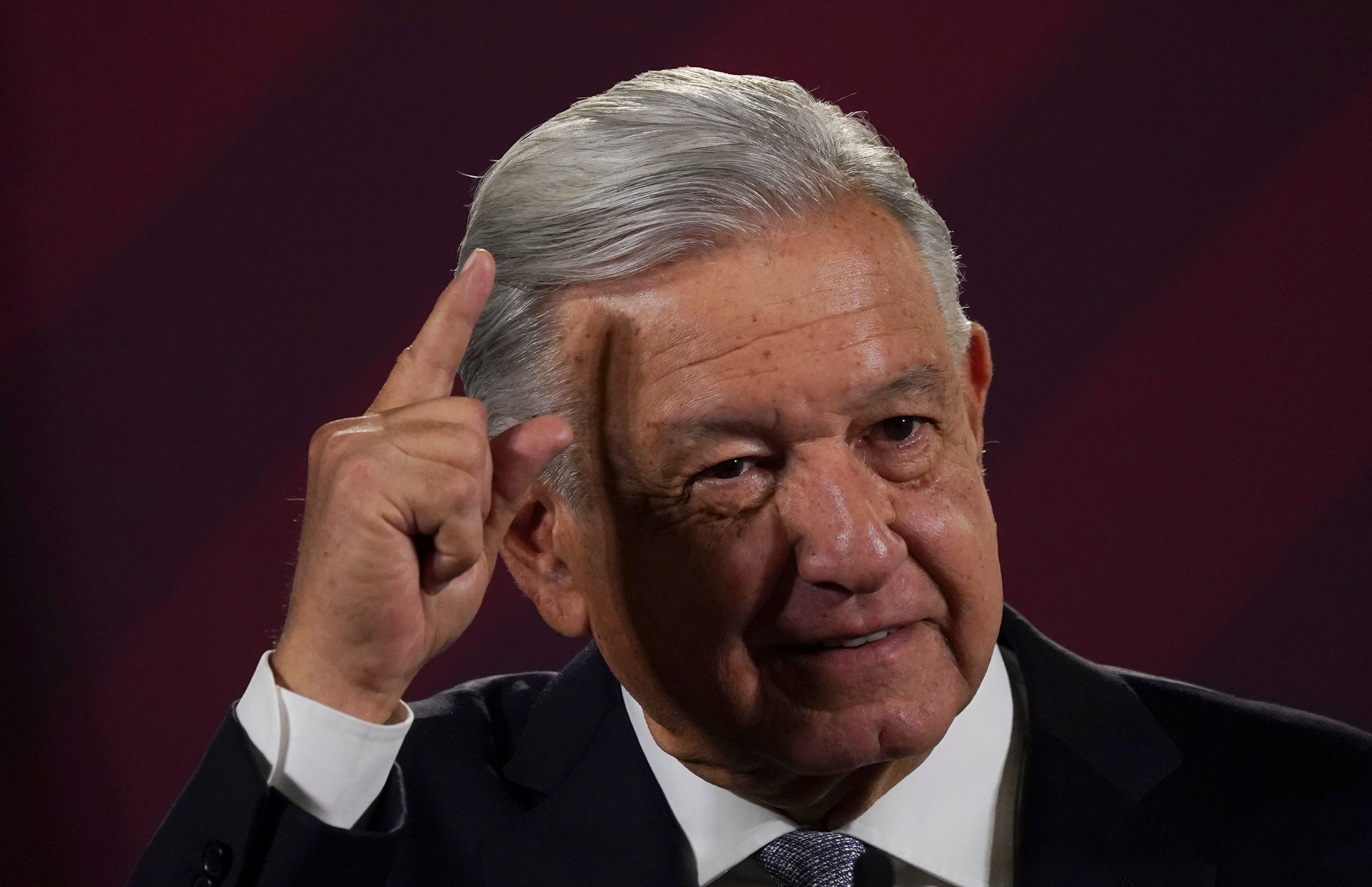Mexican president to US: Fentanyl is your problem
Mexico's president has said his country does not produce or consume fentanyl, despite enormous evidence to the contrary

Mexico’s president said Thursday that his country does not produce or consume fentanyl, despite enormous evidence to the contrary.
President Andrés Manuel López Obrador appeared to depict the synthetic opioid epidemic largely as a U.S. problem, and said the United States should use family values to fight drug addiction.
His statement came during a visit to Mexico by Liz Sherwood-Randall, the White House Homeland Security Advisor, to discuss the fentanyl crisis. It also comes amid calls by U.S. Republicans to use the U.S. military to attack drug labs in Mexico.
The Mexican government has acknowledged in the past that fentanyl is produced at labs in Mexico using precursor chemicals imported from China. Fentanyl has been blamed for about 70,000 opioid deaths per year in the United States.
“Here, we do not produce fentanyl, and we do not have consumption of fentanyl,” López Obrador said. “Why don't they (the United States) take care of their problem of social decay?"
The Mexican president went on to recite a list of reasons why he said Americans were turning to fentanyl, including single-parent families, and parents who kick grown children out of their houses or send elderly relatives to old-age homes “and visit them once a year.”
The Mexican president's statement contrasted sharply with U.S. Ambassador Ken Salazar's statement on Twitter Thursday that a meeting between Sherwood-Randall and Mexico's attorney general was meant “to enhance security cooperation and fight against the scourge of fentanyl to better protect our two nations.”
There is little debate among U.S. and even Mexican officials that almost all the fentanyl consumed in the United States is produced and processed in Mexico.
In February, the Mexican army announced it has seized more than a half million fentanyl pills in what it called the largest synthetic drug lab found to date. The army said the outdoor lab was discovered in Culiacan, the capital of Sinaloa state.
In the same city in 2021, the army raided a lab that it said probably made about 70 million of the blue fentanyl pills every month for the Sinaloa cartel.
“The president is lying,” said Mexican security analyst David Saucedo. “The Mexican cartels, above all the CJNG ( Jalisco New Generation Cartel) and the Sinaloa Cartel have learned to manufacture it.”
“They themselves buy the precursor chemicals, set up laboratories to produce fentanyl and distribute it cities in the United States and sell it,” Saucedo said. “Little by little they have begun to build a monopoly on fentanyl, because the Mexican cartels are present along the whole chain of production and sales.”
While it is true that fentanyl consumption appears to remain low in Mexico and largely confined to northern border areas, that may be because the Mexican government is so bad at detecting it. A 2019 study in the border city of Tijuana showed that 93% of samples of methamphetamines and heroin there contained some fentanyl.
Saucedo said that fentanyl exports were so lucrative for Mexican cartels that they had not seen much need in the past to develop a domestic market for the drug.
“It is true that fentanyl consumption in Mexico is marginal, but some mid-level cartels have begun selling it in border cities and in big cities like Leon, Mexico City and Monterrey,” Saucedo said.
On Wednesday, U.S. Sen. Lindsey Graham held a news conference, saying he wanted “to unleash the fury and might of the U.S. against these cartels."
“The second step that we will be engaging in is give the military the authority to go after these organizations wherever they exist,” Graham said. "Not to invade Mexico. Not to shoot Mexican airplanes down. But to destroy drug labs that are poisoning Americans.”
López Obrador said Mexico would not accept such threats, calling them “an insult to Mexico and a lack of respect for our independence and sovereignty.”
López threatened to start a campaign in the United States, asking Mexicans and Hispanics who live there not to vote for Republicans.
“We are going to issue a call not to vote for that party, because they are inhuman and interventionist,” López Obrador said.
Mexicans, both in government and outside it, are clearly afraid of fentanyl use increasing in Mexico. A civic group has launched a campaign of painting walls with the slogan “Mxsinfentanilo” — “Mexico without fentanyl” — and López Obrador has launched a series of anti-drug TV ads.
But once again, López Obrador's government appears to view fentanyl as a U.S. problem.
In the ads launched in November, the Mexican government used videos of homeless people and open-air drug users in Philadelphia’s embattled Kensington neighborhood to try to scare young people away from drugs.
Bookmark popover
Removed from bookmarks